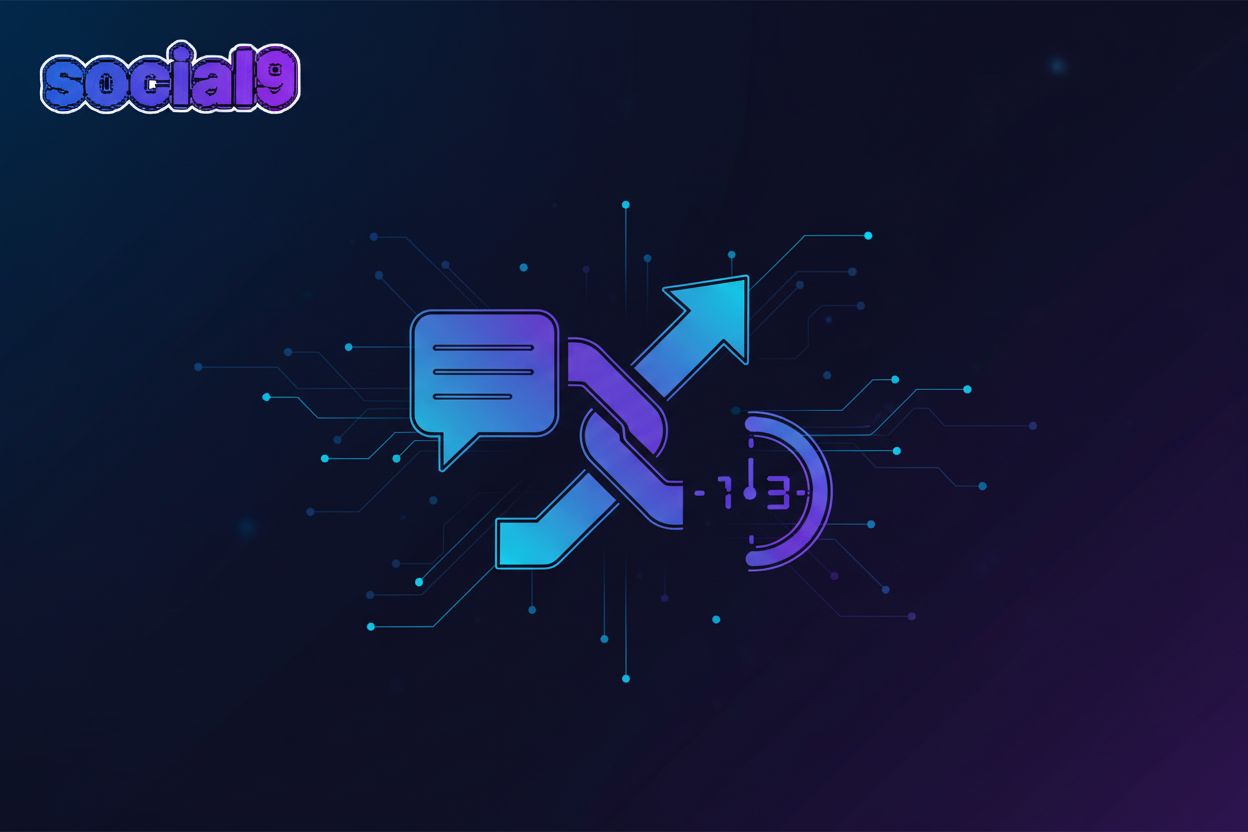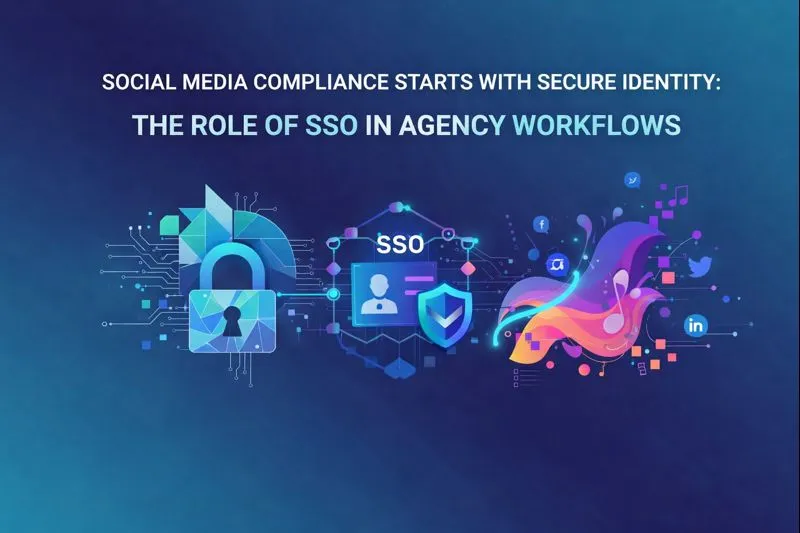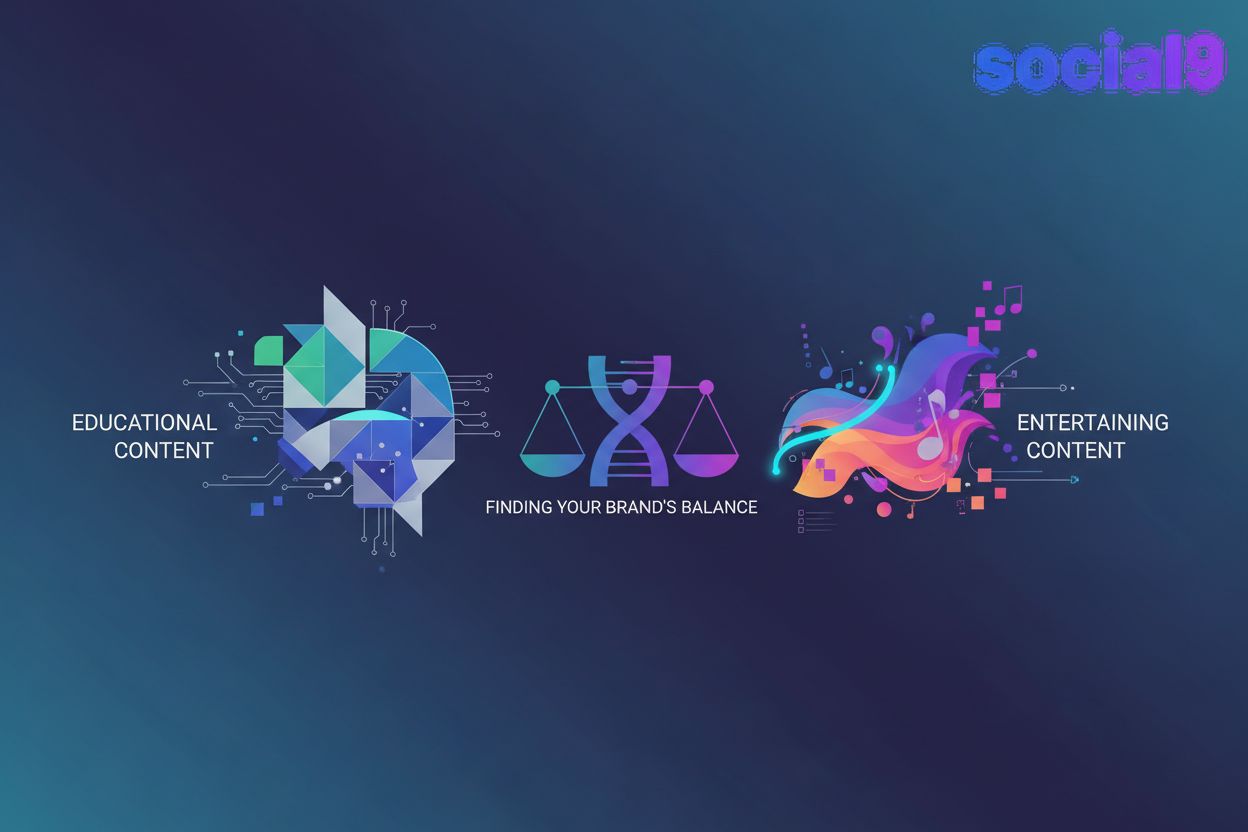Generative Adversarial Networks (GANs) for Social Media Content Creation: A Comprehensive Guide
Understanding Generative Adversarial Networks (GANs)
Generative Adversarial Networks (GANs) are kinda like this creative duo, right? They're always challenging each other to get better at making stuff. These networks have totally changed how we create content, letting machines whip up realistic images, videos, and all sorts of other things.
Basically, GANs are a way to generate new data that looks a lot like the real data you feed them. Generative Adversarial Networks have two main parts:
- The Generator: This guy makes fake data, trying its best to copy the real stuff.
- The Discriminator: This one's the judge. It looks at the fake data and tries to tell if it's real or not.
- This whole back-and-forth thing makes both of them get better and better, so the generated content ends up looking super real.
The cool part about GANs is how they learn. The generator starts with random noise and tries to turn it into something that looks like real content. Then, the discriminator gives it feedback, saying "nope, that's fake" or "yeah, that looks pretty good."
This keeps going, and both the generator and discriminator get smarter. It's like a constant competition where each one pushes the other to improve.
GANs have come a long way, and there are different types now, each good for different things. Here are a few you might hear about:
- Vanilla GANs: These are the basic ones, using simple neural networks. They sometimes have a problem called mode collapse, which means the generator only makes a few kinds of outputs, not a lot of variety. This is a big deal for social media because you want lots of different, interesting content, not just the same thing over and over. If a GAN only makes pictures of, say, dogs wearing hats, that's not gonna cut it for a diverse social media feed. To try and fix this, people use things like adding noise to the discriminator's input or using different loss functions.
- Conditional GANs (CGANs): These let you control what you generate based on specific things, like labels. So, you could ask for a picture of a cat with blue eyes, and it'll try to make that.
- Deep Convolutional GANs (DCGANs): These use more advanced neural networks (CNNs) to make really good-looking images, which is awesome for creating visuals.
GANs are always getting better. Next, we'll dive into how GANs actually work their magic in that whole adversarial dance.
GANs Revolutionizing Social Media Content Creation
Making content for social media doesn't have to be limited by what humans can think up anymore. Generative Adversarial Networks (GANs) are totally changing the game, making it way easier and more creative to produce stuff.
GANs are amazing at making visuals that look so real, you can barely tell they're not. This is a huge deal for social media marketing.
- AI-Generated Visuals: GANs can create pictures and videos of people, things, and places that don't actually exist. This is super useful for making unique content without needing expensive photoshoots. You can even control some of the details, like asking for a person of a certain age, ethnicity, or even with a specific emotion. This is thanks to conditional generation, where you give the GAN specific instructions.
- Stock Photo Alternative: Brands can stop paying for stock photos and just create their own original visuals for campaigns.
- Brand Consistency: If you train a GAN on a brand's existing images, it can make new ones that perfectly match that brand's look and feel.
Think about a health company needing pictures of doctors. GANs can make all sorts of diverse, realistic images without hiring actors or photographers.
Visuals are important, but captions are what give your content its voice. GANs can help with that too.
- Text-to-Image Synthesis: GANs can actually generate captions that go with the images they create, making sure the message is consistent. It's important to note that this often involves separate ai models for image captioning, or specific GAN architectures designed for this combined task, rather than just a standard image-generating GAN.
- Brand Voice Adaptation: By feeding a GAN examples of past social media posts, brands can get captions that sound just like their own unique style.
- A/B Testing: GANs can create a bunch of different caption options so you can test which one works best.
Social media success means making content that fits each platform. GANs can automate this whole process.
- Cross-Platform Optimization: GANs can resize and change images and videos so they look great on Instagram, Facebook, X, and TikTok.
- Style Transfer: GANs can even change the visual style of content to match what's popular on different platforms.
- Content Variety: GANs can make multiple versions of the same message, so your audience doesn't get bored and you can reach more people.
A retail brand could use GANs to take one product photo and make it work for all their different social media channels, keeping the branding consistent everywhere.
These are just a few ways GANs are shaking up social media content creation. Next, we'll talk about the ethical side of using this powerful tech.
Use Cases: GANs in Action for Social Media
GANs are changing social media, but how exactly are they being used? Let's look at some specific examples where Generative Adversarial Networks are making a big impact.
Tired of the same old influencer marketing? GANs offer a new way by creating virtual brand ambassadors. These ai influencers can deliver your brand's message consistently without the hassle or cost of human influencers.
- Virtual Brand Ambassadors: Ai influencers can be designed to perfectly match your brand's values and look. They can interact with people 24/7, making sure your brand message is always consistent.
- Personalized Avatars: GANs can create unique avatars for users to represent themselves online. This is great for platforms where privacy is important or people just want to be anonymous.
- Cost-Effective Marketing: You can rely less on expensive human influencers and create engaging content for way cheaper. Ai influencers can join campaigns, product launches, and other marketing stuff.
E-commerce brands can use GANs to make product experiences more engaging. Use GANs to show off products in ways that flat images just can't.
- Interactive Product Demos: Generate videos showing products in different settings, lighting, and how they're used. This helps potential customers imagine the product in their own lives.
- Customizable Product Mockups: Let users see products with personalized options, like different colors or styles. This makes shopping more interactive and personal.
- Enhanced E-commerce Experience: Get more people interested and buying with dynamic visuals that grab attention and give more info about the product. A more engaging experience can lead to more sales and happier customers.
Imagine a social media feed that's perfectly picked out for each user's interests. GANs can power ai-driven curation systems that make this happen.
- AI-Powered Curation: Recommend content that's just right for each user, making them more likely to engage. By looking at what users do and what the content is like, GANs can spot patterns and guess what they'll like.
- Improved Engagement: Get more clicks and keep people on the platform longer by showing them content they actually care about. Personalized recommendations can make the experience better and build loyalty.
- Data-Driven Insights: Understand how users behave and how content performs, so you can improve your content strategy and make the whole platform work better. Knowing what works for different groups of users can help with creating content and marketing.
GANs have the potential to totally change how social media content is made and how people experience it. But we gotta think about the ethical stuff, like data privacy and ai bias, to make sure it's used responsibly.
Next, we'll look into the ethical considerations of using GANs in social media content creation.
Social9: Level Up Your Social Media Content With AI
Creating content for social media can be a real pain, and creators often feel stuck. What if an ai assistant could seriously boost your social media game?
Social9 is an ai-powered social media assistant made to help creators like you. With Social9, you can make engaging social media content that connects with your audience and gets results. From ai-powered generation to hashtag ideas and content templates, we've got what you need to make posts that stop people from scrolling.
Social9 wants to make your content creation process easier and better. The platform has a bunch of tools designed to help you make awesome social media posts.
- AI-Powered Generation: Easily create high-quality posts, captions, and visuals.
- Smart Captions: Write catchy captions that grab attention and get more engagement.
- Hashtag Suggestions: Find relevant hashtags to reach more people.
- Content Templates: Use a bunch of ready-made templates to speed up your content creation.
- 24/7 Support: Get help from experts whenever you need it.
Social9 can help all sorts of creators, from individuals to big brands. For example, a fashion blogger could use ai-generated visuals to show off new outfits, and a small business owner could use smart captions to promote their products.
Ready to change your social media strategy? Check out Social9.com to explore our ai-powered tools and start making content that gets noticed. Join the Social9 community and take your social media game to the next level!
Next, we'll explore the ethical considerations of using GANs in social media content creation.
Ethical Considerations and Challenges of Using GANs
It's super important to think about the ethical side of using GANs, because these tools can accidentally spread fake news or make existing biases even worse. So, we really need to understand and deal with these problems for responsible use.
One of the biggest ethical worries is that GANs can create really convincing deepfakes. These fake videos and images can trick people and make them not trust digital content anymore.
GANs can make fake pictures and videos that are hard to tell from the real thing. This is a big problem for spreading misinformation and messing with what people think.
To fight this:
- We need to develop tools to spot ai-generated content. These tools can help find deepfakes and stop misinformation from spreading.
- It's important to clearly label ai-generated content so people know what they're looking at. Being open helps prevent deception and encourages people to think critically.
- We should promote media literacy education to teach people how to spot and evaluate digital content. A more informed public is better at telling what's real and what's not.
GANs can accidentally keep and even make worse the biases that are already in society if the data they're trained on isn't carefully chosen. This can lead to unfair or discriminatory outputs.
To fix this:
- Use diverse and representative datasets. This means using data that includes lots of different people, cultures, languages, and perspectives. For social media, this could mean training data that reflects a wide range of demographics, cultural contexts, and even different types of online interactions. If you don't, you might end up with GANs that only generate content for a specific group, or that portray certain groups in a stereotypical way, which is obviously not good.
- Put in place fairness checks to see if the generated content is biased and to reduce it. Making sure algorithms are fair is key to stopping discrimination and promoting equality.
- Get different kinds of people involved when designing and building GANs. When diverse teams work on these things, the technology is more likely to reflect a wide range of views and values.
Using GANs also brings up questions about who owns the content and what's real. It's important to check where ai-generated content comes from and how it was made.
To make sure things are real and respect copyright:
- Create ways to track where ai-generated content comes from. Knowing the origin helps hold people accountable and stops misuse.
- Set clear rules for using copyrighted material when training GANs. Respecting intellectual property is crucial for innovation and creativity.
- Encourage responsible use of GANs and respect for intellectual property. Ethical guidelines can help prevent copyright infringement and promote fair use.
Dealing with these ethical issues will help us use GANs in social media content creation in a more responsible and beneficial way. In the next section, we'll explore future trends and opportunities in this fast-changing field.
Training and Evaluating GANs for Social Media
Getting GANs trained and evaluated right is key to making good social media content. This involves getting your data ready, picking the right setup, and using good ways to check how well it's working.
Getting good quality data is the first step to training GANs for social media. Picking training data that's relevant and represents what you need helps the GAN learn the specific features of social media content.
- For example, if you're training a GAN to make Instagram posts, you'd want a dataset with high-resolution images, captions, and hashtags from Instagram.
- Similarly, for making X (formerly Twitter) posts, you'd train on tweets, user profiles, and trending topics.
Data augmentation means applying different changes to both real and generated images. This helps make your dataset bigger and makes the GAN better at generalizing.
- Common things you do are rotating, flipping, cropping, and changing colors.
- To make sure the generator knows the original image wasn't changed, it's important to use invertible transforms. This means you can undo the transformation. The idea is that if the generator can perfectly reverse the augmentation applied to a real image, it's learning the underlying data distribution rather than just memorizing the augmented versions. This helps it create more diverse and realistic outputs.
Picking the right GAN setup is really important for getting the results you want. Different setups are good for different social media content tasks.
- Conditional GANs (CGANs) let you make images based on specific labels or conditions. For instance, a CGAN can create images of products with certain features, like a specific color or style.
- CycleGANs are useful for changing things between two different types of data, like turning summer photos into winter ones or day into night.
- StyleGANs let you control the style of generated images really precisely, so content creators can tweak things like texture, color, and lighting.
Checking how well GANs are performing is essential to make sure the generated content is good enough. There are several ways to measure how realistic and diverse the ai-generated content is.
- The Inception Score (IS) measures how good and diverse the generated images are. A higher score means better quality and diversity, but it can sometimes be fooled if the GAN is suffering from mode collapse.
- The Fréchet Inception Distance (FID) compares how similar the generated images are to real images. A lower FID means the generated data is more like the real data.
- Human checks involve asking people to look at the ai-generated content and say if it looks real and engaging. This gives really useful feedback on how the GAN performs in real-world situations.
By carefully training and checking GANs, content creators can use this technology to make awesome and engaging social media content. Next, we'll look at future trends and opportunities in this field.
The Future of GANs in Social Media Marketing
GANs are getting better super fast, and it looks like ai will play a huge role in creating social media content in the future. But what new things and cool developments can we expect soon?
3D Content Generation: GANs are going to be able to create realistic 3D models, which will make for more immersive experiences for users. This opens up possibilities for interactive product demos and virtual tours.
Interactive Content Creation: People will work more with GANs to create personalized content. Imagine brands letting customers use ai tools to design their own ads or product mockups.
AI-Driven Storytelling: GANs will be able to create engaging stories and plots for social media campaigns. This could mean ai-generated scripts for short videos or personalized story content.
Reinforcement Learning: GANs can be trained using reinforcement learning to make content even better. This means ai can learn over time which content performs the best.
Natural Language Processing (NLP): Combining GANs with NLP will make text-to-image generation even better. This lets content creators make images that perfectly match their brand's voice.
Computer Vision: Connecting GANs with computer vision will allow for advanced content analysis and editing. This lets ai understand and change existing content to make it more engaging.
AI as a Creative Partner: Content creators will use GANs as a tool for inspiration and trying new things. This can help them get past creative blocks and come up with unique ideas.
Focus on Strategy and Curation: Content creators will spend more time on planning and picking content. This will free them up to focus on engaging with their audience and building their brand.
New Skill Sets: Content creators will need to get good at ai prompt engineering. This means learning how to write effective text prompts to guide GANs in creating the specific outputs you want.
"The Social Lives of Generative Adversarial Networks" highlights the need for social and ethical considerations in AI development.
As GANs get better, they'll change how social media content is made, and we'll need new skills and strategies. The future looks promising, but it's really important to use it responsibly.





